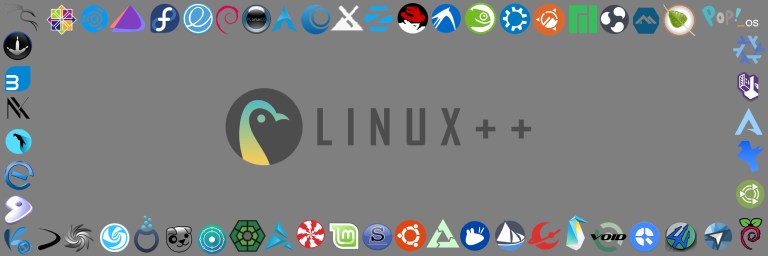
Hello and welcome to the nineteenth edition of Linux++, a weekly dive into the major topics, events, and headlines throughout the Linux world. This issue covers the week starting Monday, May 25, 2020 and ending Sunday, May 31, 2020.
This is not meant to be a deep dive into the different topics, but more like a curated selection of what I find most interesting each week with links provided to delve into the material as much as your heart desires.
If you missed the last report, Issue 18 from May 24, 2020, you can find it here. You can also find all of the issues posted on the official Linux++ Twitter account here or follow the Linux++ publication on the Destination Linux Network’s Front Page Linux platform here.
In addition, there is a Telegram group dedicated to the readers and anyone else interested in discussion about the newest updates in the GNU/Linux world available to join here.
For those that would like to get in contact with me regarding news, interview opportunities, or just to say hello, you can send an email to linuxplusplus@protonmail.com. I would definitely love to chat!
There is a lot to cover so let’s dive right in!
Personal News
Building an Operating System from Scratch

A few months ago, I discovered a really interesting project called SerenityOS. I found it through watching YouTube videos related to a C++ class I was taking at the time and ran into Andreas Kling’s, a former Apple employee, developer video blog about creating a UNIX-like operating system…from scratch…in C++. Now, this is not like most operating systems out there that are built upon different kernels or utilize tools from projects like GNU (GNU’s Not Unix). No, no. This operating system — from the kernel to the GUI toolkit, Shell, and even the userland applications — is built from the ground up. And, for quite a while, it was developed by a single person with super-human software engineering skills (even though he is modest about it)!
Andreas posts many live hacking videos of everything from implementing new functionality to squashing some pesky bugs. I usually don’t spend too much time watching other people code on the Internet, however, Andreas does such an incredible job of thinking out loud and making development seem easy in a sense, that I find myself spending quite a bit of time watching his videos when they come out.
The goal of SerenityOS is well-summarized by Andreas on the project’s GitHub page:
“SerenityOS is a love letter to ’90s user interfaces with a custom Unix-like core. It flatters with sincerity by stealing beautiful ideas from various other systems. Roughly speaking, the goal is a marriage between the aesthetic of late-1990s productivity software and the power-user accessibility of late-2000s *nix. This is a system by us, for us, based on the things we like.”
Though SerenityOS is still in it’s early infancy, I was able to check it out using the popular open source QEMU technology by following the instructions on the official GitHub page. It’s one thing to look at pictures of a novel operating system, but actually using it is another world completely.

I’m happy to say that my experience with SerenityOS has been nothing but positive. I’m honestly astonished by how responsive the system is and how few bugs I’ve run into during my testing of it. This is a super cool project that I’m really excited to continue following and can’t wait for the day that it supports x86_64 architecture seamlessly and can test it out on real hardware.
I will likely continue to provide updates on Serenity’s development in this personal news section as I discover more and more about the operating system.
So, if you’re like me, and love to check out new and novel operating systems, I highly recommend you follow Andreas on Twitter, YouTube, and the project’s official GitHub repository (where you can find the instructions to try it out). Below, I’ve linked a recent development video by Andreas that details the built-from-scratch GUI toolkit of SerenityOS and the way he builds a “layer list” widget for his PixelPaint program:
Community News
The System76 Revolution

Many people in the Linux community often wonder what significance the “76” in System76’s company name holds. Being one of the first Linux-focused hardware manufacturers in the world, the “76” stands for 1776, the year that the United States of America gained it’s independence from Great Britain through the Revolutionary War. From this, it is obvious that the idea of revolutionizing the personal computing industry with desktop GNU/Linux and open source hardware/software was and continues to remain a major mission statement and passion of the progressive technology company, from CEO Carl Richell on down.
Though most people associate System76 with hardware, their contributions to software with initiatives like their own Ubuntu-based Pop!_OS cannot be understated at all. In fact, System76 has even started contributing to the mainline Linux kernel in order to provide optimized support for their hardware devices as well as the upstream GNOME Project for fixes and improvements to the default desktop environment that ships with Pop!_OS. So, System76 is truly revolutionizing the Linux computer by integrating both hardware and software in a convergent way in order to ship the best Linux product possible. There is no doubt that System76’s computers can stand up to anything shipping with the proprietary operating systems like Microsoft’s Windows 10 or Apple’s macOS.
This week, System76 put out a very interesting and insightful blog post, titled What Makes a System76 Computer?. In it, System76 outlines the main factors that, when combined, make up the System76 vision of the personal computer including maximum performance capability, serviceability, uninterrupted workflow, openness, and customization.

Though System76 definitely attempts to appeal to as wide of a customer base as possible, they also realize that Linux is by far the greatest platform available to software developers on the planet and without a doubt the most popular for software deployment in the real world. With some of the hottest trends in computer science like Machine Learning (and Deep Learning) at the forefront of the tech industry’s mind today, computational power, especially that which utilizes the impressive matrix operations performed by Graphical Processing Units (GPUs) is becoming more and more important. To understand and cater to these power users, System76 has worked tirelessly to provide the best support for their hardware along with the top of the line processors.
Instead of the install and leave it attitude of many hardware vendors, System76 tweaks their computers in order to squeeze out every last bit of performance available. One example that System76 points out is their work on thermals, which can allow the user to push their computation to the limit without having to worry about the range of problems that can accompany it like overheating or throttling.
Moreover, an extremely important aspect that is hotly debated in the hardware sphere is that of the user’s Right to Repair (RtR). Some companies, most notably Apple, have worked hard to turn their devices into metaphorical black boxes. This allows them to monopolize the service department, requiring their customers to take their device into a certified Apple retailer in order to pay a premium should something break with their hardware or software, even if it is something that was the direct fault of Apple’s own engineering. Due to this, users are unable to bring their machines into local or smaller electronic repair shops because they will either void the costly warranty on their hardware or the shops might not even have the proper tools to fix certain issues. And, if shops outfitted for computer repair don’t have the proper tools, it is highly unlikely that the customer does.
Beyond that, those who are capable and knowledgeable about computer hardware aren’t given the chance to repair the computers themselves without possibly destroying it in the process (and again voiding their warranty). Also, any kind of customization or swapping of parts in Apple’s computers is not supported, forcing users to upgrade their entire computer if they require higher performance. Moreover, it was discovered that Apple was heavily lobbing state governments against the RtR legislation introduced last year with the excuse that “self repair can be extremely dangerous and harmful to users.”
Though Apple is used as an example that is on the extreme end of the spectrum, many other hardware companies have taken notice of Apple’s strategy via the benefits of this monopolistic process, not only the monetary benefits, but also the legal benefits of exempting themselves out of any troubling situation that occurs outside their service departments, and are moving in a direction to follow Apple’s suit.

However, System76 realizes the massive flaw in this business model (and yes, it is a business model) and is vehemently opposed to violating their customer’s RtR. Instead, they are taking the exact opposite of Apple’s approach by allowing their customers access to every part of the system possible— from the hardware to the software. They even provide extensive user-facing documentation detailing the exact procedures for customers to take when repairing or altering the hardware of their particular model. The open source company understands that not everyone has the ability to purchase a new machine every time they require or desire a hardware upgrade.
In fact, System76’s quest to produce a completely open source machine has led them to their desktop computer model, the Thelio. The Thelio was conceived in order to provide a true open source solution to desktop computing — from the hardware to the software. System76 designed the Thelio from the ground up in a way to ensure that customers would have ample space to upgrade or switch out parts. The company actually encourages this type of exploration and freedom for the user. Some examples of what System76 has implemented into the Thelio’s design to make it as easy as possible for the user include an extremely spacious design, the addition of a hot-swap drive bay for quickly switching out storage drives, and pre-wiring for potential component upgrades wherever possible to make it extremely easy to add components. Now that’s what I call awesome!
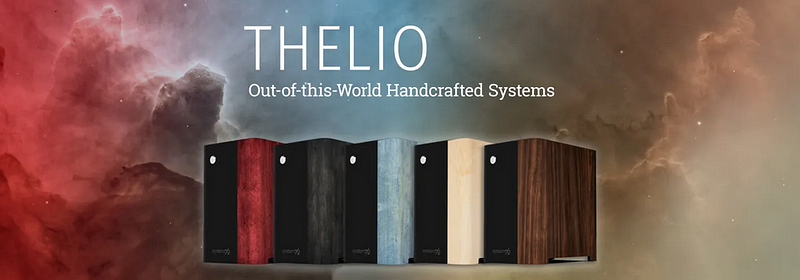
In order to compete in the computer hardware industry, devices must stand up to a certain quality. First and foremost, the computer has to work seamlessly out-of-the-box. This is one area that Microsoft and Apple have done relatively well — you can be pretty well sure that whatever external devices you purchase will work on them with relative ease. Now, Linux has come an extremely long way in a short amount of time in this regard. However, due to the fact that major hardware manufacturers don’t officially support Linux, issues can arise with different parts of the system that can potentially be complicated, and outside of the realm of a layperson, to fix.
To combat this issue, System76 continuously works on developing and improving the hardware, software, and firmware to run Linux natively, allowing users to not have to worry as much about their system breaking or encountering problems trying to set up their printer. With reduced time spent on fixing issues, System76’s users can enjoy an uninterrupted workflow. Moreover, System76 employs an extremely helpful service department that is willing to answer any question or find a solution to any problem a customer might encounter.
At the heart of Linux, and therefore System76, is the idea of openness. Transparency into a system has the potential to allow anyone to contribute to and improve it. This is one of the main reasons that open source software and the ethos it provides has permeated almost every corner of the tech sector. System76 is different in that they are attempting to make everything open source — from their hardware designs to the firmware that ships with the machine. Over the years, they have been slowly chipping away at all of the proprietary hardware, software, and firmware required to run their computers. With initiatives like System76 Open Firmware (based on Coreboot) and System76 Embedded Controller Firmware, they are coming closer to accomplishing their goal each day.

Open source allows the community to get involved in a way that is simply impossible otherwise. System76 has done an incredible job of listening to their community and building the functionality that they desire, all while maintaining the high quality that is expected with their products.
Another of the major draws to Linux is that of customization and configuration. Unlike proprietary operating systems like Windows 10 and macOS, most Linux systems allow for customizing everything you can possibly imagine from the kernel you run to the software that runs on your system to the simple things like cosmetic alterations and desktop layout configuration. System76 tries to provide as much customization as possible for their products. From the operating system and software they stand behind to the hardware they release out into the world, there are options for everyone to make their computing experience truly personal.
I want to take a moment to congratulate System76 on the incredible job they have done over the years. Watching them grow into the company that they are today has been so exciting and fulfilling, because I know that they truly embody the open source software movement — not as a selling point, but deep in their passionate hearts. Thank you for producing such incredible machines that have truly helped me to become the most productive I ever have running desktop Linux.

If you would like to read the official blog post by System76, you can find it here. In addition, if you want to learn a little bit more about the company and it’s leader, check out the interview that CEO Carl Richell did on a previous issue of Linux++ here.
Cinnamon Desktop Upgrades to Version 4.6

Though upgrades to Linux Mint’s homegrown Cinnamon desktop environment have been teased monthly with the update posts on Linux Mint’s official blog, this week, they were finally marked as stable. Cinnamon 4.6 comes with a number of impressive updates as has become expected of the traditional, yet configurable, desktop environment.
The biggest news with the 4.6 release? Well, support for fractional scaling on HiDPI/4K displays, of course. With this new and long-awaited feature, Cinnamon users will be able to choose scaling values between 100% and 200% with 25% increments. In addition, there is now the ability to alter the frequency of monitors. This functionality can now be accessed in the “Display Settings” menu.
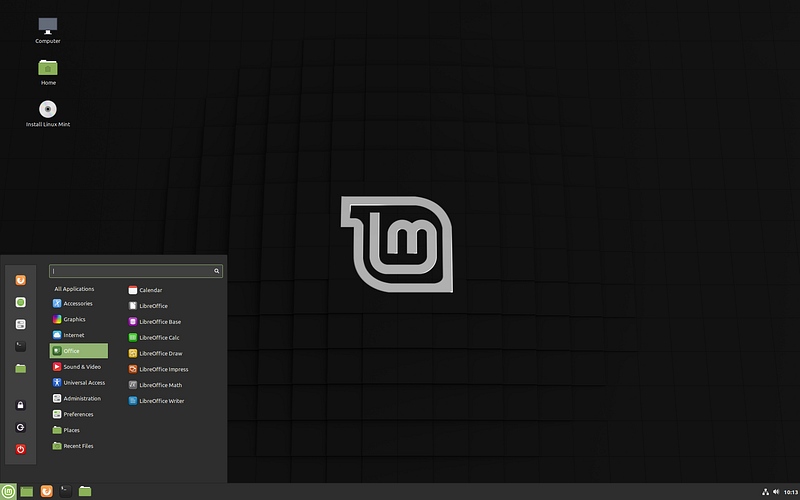
Moreover, Nemo, one of the most full-featured file managers in the ecosystem has received some massive performance improvements. These optimizations were enabled in part by a change in how Nemo handles thumbnail generation, in order to prioritize content and navigation. This change allows for Nemo to benefit from performance gains not only on the latest hardware, but should have an extremely noticeable affect on machines utilizing older HDDs or dealing with heavy Input/Output operations.
Additionally, the system tray applet has moved into the modern age by offering better support for Electron-based and Qt applications and their respective indicators in any distribution utilizing Cinnamon 4.6.
There are a significant amount of other, smaller changes integrated into the new Cinnamon including support for NVIDIA On-Demand application launching in the menu, panel launcher, and gwl applets, Python 3.8 compatibility, new keywords, custom icon size for the Menu applet, and new keyboard shortcuts to display the calendar, open the menu, and clear unwanted notifications.
Other changes include a new pop-up when restarting the system, and a 2-second delay option when attempting to lock the screen. Also, there are a myriad of new button layouts available as well as a new button in the notifications applet to open the System Settings.

Cinnamon 4.6.2 will ship with the future Linux Mint 20.0 “Ulyana” when it is finalized and released to the public. Besides the massive upgrades in the desktop department, Linux Mint will also be moving its base system from Ubuntu 18.04 LTS to the new Ubuntu 20.04 LTS release, which should benefit from some massive improvements as well as an updated kernel.
Huge shout out to Marius Nestor, of 9-to-5linux.com for researching and compiling all of the various improvements spread throughout Linux Mint’s blog posts, which he detailed in his own post that can be found here. Thanks, Marius!
If you would like to read the official changelog for Cinnamon 4.6 by the Linux Mint developers, you can find it on GitHub here. In addition, if you would like to try out the latest release of Cinnamon, you can give it a shot with rolling release distributions like Arch Linux or Manjaro (the latest Cinnamon community edition of Manjaro 20.0.1 can be found here).
New High-Powered AMD Laptop from TUXEDO

Just last week, Linux-focused hardware company, TUXEDO Computers, announced their first machine to utilize AMD, the most popular processors in the Linux community right now — the TUXEDO Book BA15. The focus of that model was on endurance and portability, utilizing low energy processors and an extremely light weight to maximize battery life and mobility of the machine (you can learn more about this model in last week’s Linux++ here).
This week, TUXEDO unveiled another AMD machine in a real world Dr. Jekyll and Mr. Hyde scenario ;). The TUXEDO Book XA15 is built for one thing and one thing only — performance. Marketed as a high-end gaming laptop and desktop replacement, the folks at TUXEDO are not lying one bit. This baby packs a punch, that’s for sure!
Unlike the BA15 release last week, the XA15 has a myriad of options regarding the hardware available for it. For starters, the AMD Ryzen 3000 series CPUs that can be integrated into the computer include the Ryzen 5 3600, Ryzen 7 3700X, Ryzen 7 3800X, Ryzen 9 3900X, or, at the maximum end, the Ryzen 9 3950X. In addition, the CPU is completely upgrade-able at any time as the processor is not soldered to the motherboard, but instead plugged into the AM4 socket.
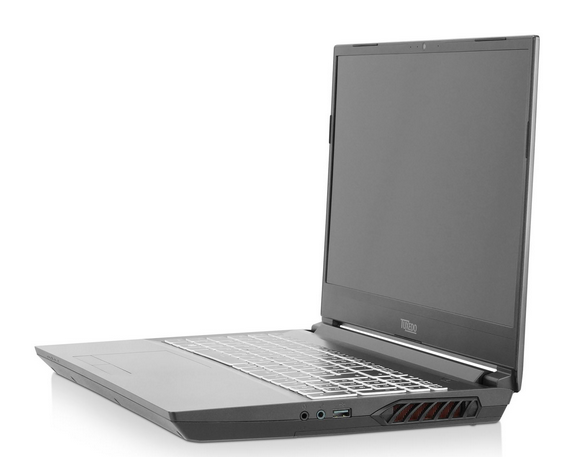
To accompany the high-powered AMD Ryzen 3000 series CPU, customers have the choice of either an NVIDIA GeForce RTX 2060 Refresh or NVIDIA GeForce RTX 2070 Refresh high-performance GPU that comes maxed out at 8GB RAM. To accompany the extremely powerful graphics cards, the XA15 boasts a 144Hz IPS panel with 90% sRGB color gamut and brightness levels of around 300 nits, which is directly connected to the GPU, sidestepping the graphics switching issue on Linux via NVIDIA Optimus. Awesome!
Moreover, the XA15 can be maxed out with up to 64GB 2666Mhz Samsung RAM, 8TB Samsung 860 EVO SSD storage, Intel Wi-Fi AX200, and Bluetooth 5.1. Like other TUXEDO machines, the XA15 ships with the choice of Ubuntu 18.04 LTS “Bionic Beaver”, openSUSE Leap 15.1 (GNOME 3, KDE Plasma, or Xfce), or TUXEDO’s homegrown Ubuntu-based TUXEDO OS 18.04 LTS.
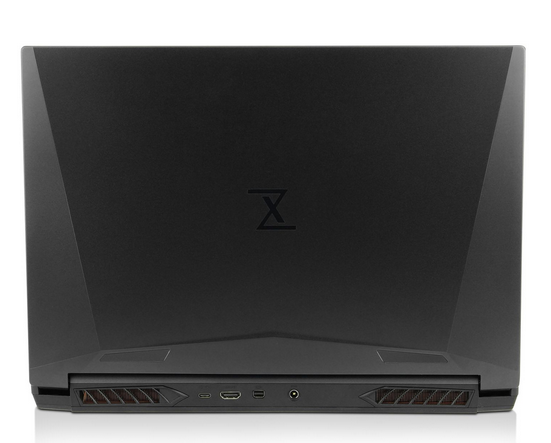
I want to seriously congratulate TUXEDO on a very successful roll out of their new AMD-supported machines. This is something that many in the Linux world have been looking for, but it is often difficult to find AMD machines on the market without knowing where to look. I know the community thanks you for rolling out two very different machines for two very different purposes. Keep up the awesome work and I hope to see more AMD machines come down the line!
If you would like to check out the specs or purchase a TUXEDO Book XA15, you can find the official webpage here. Additionally, if you would like to follow along with TUXEDO Computers, you can find them on Twitter, Facebook, Telegram, or their official news blog here.
Nitrux 1.2.9 Released

The extremely innovative and highly gorgeous Linux distribution, Nitrux OS, is an incredible operating system that is based on the ever-popular Ubuntu distribution with a ton of design and flavor added via their homegrown NX Desktop, which is an extension of the KDE Plasma 5 desktop. Nitrux has a very unique approach on the Linux desktop that includes an attempt to distill Plasma down to a more usable and better out-of-the-box desktop, while also trying to focus heavily on the universal Linux packaging format, AppImage, in order to deliver software to the system.
Nitrux is highly usable for the beginner, superuser, and anyone in between. Founded by Uri Herrera (see his interview in Linux++ from April 12, 2020 here) in 2017, Nitrux OS really stands out as one of the most beautiful Linux distributions in the world due to Uri’s incredible skill as a graphic designer.

This week, the developers behind Nitrux announced the release of version 1.2.9, which brings with it some pretty hefty updates and improvements. This version is based on the highly-praised Ubuntu 20.04 LTS “Focal Fossa” release and utilizes the newer Linux kernel version 5.6.0. On that same note, the Nitrux team has changed the kernel from mainline builds to Linux OEM builds, which will provide automatic updates to the user.
Moreover, Nitrux has been updated to include the latest stable release of KDE Plasma 5.18.5, KDE Frameworks 5.70.0, KDE Applications 20.04.01, and Qt to 5.14.2. Nitrux’s own UI framework, MauiKit, has also been updated to the latest version 1.1.1 along with all of the applications that utilize it.

On the visual side of things, the Nitrux team has updated the KvNitruxDark theme as well as the Nitrux Dark color scheme to improve the appearance of Maui applications. Also, the default Luv icon theme was updated for the doodle component in Maui applications. Also in the design department, it appears the wallpaper selection has been updated a bit. Some of these wallpapers were previously featured as part of the premium bundles that Nitrux sold back in 2015 along with some high-quality photographs donated from a Nitrux community member. For the cherry on top, Nitrux now ships with an updated and darker Plymouth boot theme. Though BGRT is not support, plans are in motion to include it in the next version release.
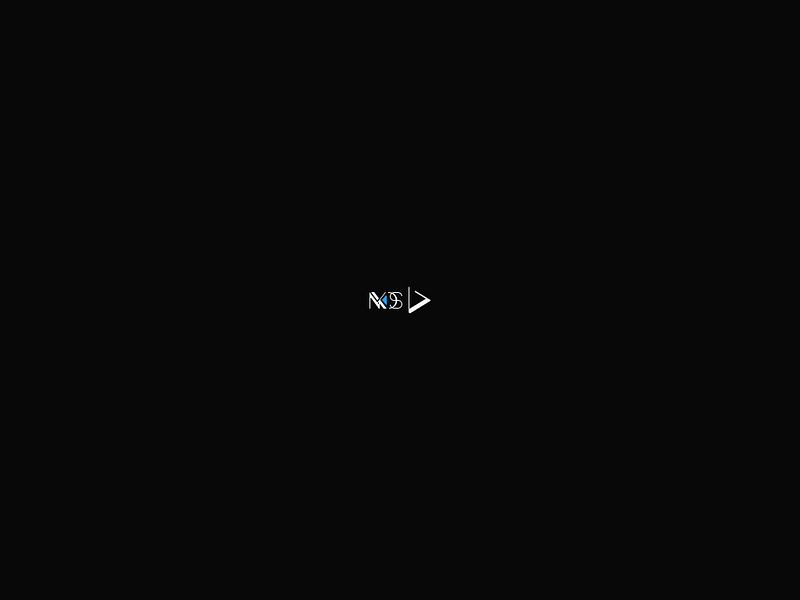
As far as software goes, Nitrux 1.2.9 ships with an updated version of MPV 0.32.0, LibreOffice 6.4.3.2, and Firefox 76.0.1. In addition, Ksysguard was replaced with a lighter-weight alternative system tool built with the Qt toolkit, Qps. On the other hand, the Maui application, Contacts, was removed from the default Nitrux installation starting with 1.2.9.
One of the biggest updates coming with the new release is that of a tiling window feature, which can be enabled through System Settings (System Settings > Window Management > Kwin Scripts > Krohnkite). Krohnkite is a dynamic tiling extension for KWin that resembles the popular Dynamic Window Manager (dwm). The overview feature, popularized by the GNOME 3 “Activities Overview”, is enabled by default on Nitrux and is available through the software package Parachute. Parachute’s actions can be toggled by CTRL + Super + D. You can check out a video demonstration of both Krohnkite and Parachute by the Nitrux team linked below:
Another huge advancement introduced with Nitrux 1.2.9 is that from here on out it will no longer be necessary to reinstall your Nitrux system to use future releases. In fact, updates to new releases will be easily provided through the package manager.
I want to give the utmost congratulations to the Nitrux developers, not just on the 1.2.9 release of their unique Linux-based system, but also on the improvements to their UI toolkit, the Maui Project. It truly appears that functionality is meeting design in an exciting way and I can’t wait to see where the Nitrux team heads next!
If you would like to read the official release notes from the Nitrux team, you can find them here. In addition, if you would like to follow the Nitrux project, you can find them on Twitter, Facebook, Instagram, Gitter, Telegram, YouTube, Medium, or their official website. If you would like to try out Nitrux 1.2.9, you can find the official ISO image here.
MaXX Interactive Desktop 2.1 Released

Ever wanted to go back to the days of simpler graphical user interfaces? Yeah, I’m not sure that’s a huge wish for many, but those who enjoy retro computing or even just a bit of nostalgia should definitely give the MaXX Interactive Desktop a look. MaXX is a re-imagination of the old IRIX Interactive Desktop that was utilized on the UNIX System V-based (with some BSD thrown in) operating system, IRIX, on Silicon Graphics (SGI) workstations in the 1990’s. In fact, that now famous quote (in the Linux community) from Jurassic Park — “It’s a Unix system, I know this,” — was actually referring to IRIX running on an SGI workstation (likely connected to the park’s central supercomputer) navigating it’s 3-dimensional file system known as fsn.
MaXX is a continuation of an earlier project that re-implemented the Motif-based 4dwm, named appropriately as 5dwm, as its main interface. The founder of the project, Eric Masson, has been working within the UNIX and Linux High-Performance Computing (HPC) field for over 30 years including J2EE mission critical system design and 2D/3D computer graphics. It’s no wonder he has a fancy for SGI! The mission statement for the MaXX Interactive Desktop from the official website:
“Our mission is to bring back this great user experience which focused on performance, stability, and productivity while sporting a smooth-clean-minimalism look and feel with low-resources consumption. A smart desktop that puts the user’s application in the forefront. More for your creativity!”

So, basically, Eric’s goal is to bring the famous SGI desktop to the Linux world via several popular distributions including Ubuntu, Debian, CentOS/RHEL, and Fedora as well as FreeBSD. This week, Eric made an announcement that the newest version, 2.1, was entering beta status, with a goal of an official release date sometime in June this year. This update brings with it quite a few performance and functionality improvements that should be released as stable soon.
In addition to all of this, it appears that SGI even provided Eric with as special license to pursue this project as stated on the official website:
“Soon enough SGI top brass learned about my efforts and was given (in early 2005) a special license (from SGI) that allowed me to pursue my passion and without getting in trouble with SGI’s laywers. This license in a nutshell allows me to duplicate the entire desktop user experience, re-implement (by myself) the required SGI APIs and duplicate the SGI look and feel. To be clear, SGI never gave or shared with me the code or technical information. It was all reverse-engineered and from public publications.”
This is a project that hits pretty close to home considering that my dad worked for SGI for several years after they purchased Cray Inc (with whom he has currently been with for nearly 40 years!). In fact, just the other day I asked him why my mom hates the Windows 10 and Linux Mint UI’s. He told me that she was so used to Motif-like desktops and never really looked at modern UI’s like Microsoft Windows because they seemed overly stimulating and complicated.

This is how I found MaXX and we might even try to let her test it out in a virtual machine to see how comfortable she would feel with the UI she utilized on her workstation for over 35 years. It should definitely be an interesting experience!
I wish nothing but the best of luck to Eric on his passion project and can’t wait to test out version 2.1 when it is released. I don’t think that an older UI would be productive for me, but maybe it could help others.
If you would like to learn more about the MaXX Interactive Desktop, you can find the latest updates on Twitter, Facebook, or their official website. If you would like to try out version 2.0 of MaXX, you can find the installation instructions for your particular distribution here.
Ubuntu Podcast Asks for Community Support

After 13 years of riding the airwaves, one of the longest running Linux-focused podcasts, Ubuntu Podcast, is asking the community for support with the post-production of their show.
From the Ubuntu Podcast Patreon page:
“Until recently, one of our sponsors provided us with post-production services for free. Unfortunately, that arrangement has now ended, and our personal circumstances have made it difficult to deliver the show to the usual quality and schedule. Your contributions will allow us to pay a professional producer to mix and edit the show, ensuring it is released on time and sounding good.
There are no tiers or perks associated with this crowd funder. If you enjoy to show or get value from it and choose to support us then it will help ensure that we release new episodes at 15:00 every Thursday.”
Ubuntu Podcast was the very first podcast that I ever listened to, so it holds a special place in my heart. I still enjoy it and listen religiously every week and will certainly be making a donation to help out with the work involved in bringing this project back on schedule. So, if you’re a fan of the show and would like to continue getting episodes on time, considering becoming a patron of the Ubuntu Podcast here.
Community Voice: Ryan “DasGeek”

This week Linux++ is very excited to welcome Ryan “DasGeek”, co-founder of the Destination Linux Network (DLN), community personality on popular Linux-focused podcasts including Destination Linux and Hardware Addicts, and content creator for his personal YouTube channel, DASGeek. So, without further ado, I’m happy to present my interview with Ryan:
How would you describe Linux to someone who is unfamiliar with it, but interested?
“I would say that Linux is an operating system that you’re using everyday and probably don’t even realize it. It’s used in supercomputers, cellphones, cars, robotics, and more. It’s an OS like Windows 10 or macOS with the distinct difference that you have true freedom. With Linux, you’re not renting a license of the OS like other major operating systems. Linux is open source — nobody can just take it away from you or expire a license and force you to spend money to upgrade it.
Even more than all of that, it’s a way for people to contribute to closing the digital divide. It works on older machines and newer machines and everyone can contribute to it’s development or customize it to make it your own.”
What got you hooked on the Linux operating system and why do you continue to use it?
“Most of my journey with Linux is documented on my YouTube channel as I found Linux and filmed the journey. What initially captured my curiosity was the privacy and security aspects of Linux. Windows 10 advertising, bloatware, and metadata grabbing aspects made me want something different.
There are many ‘bonus’ elements to Linux that also helped sink the hooks deeper. The ability to hack my OS to make it what I want, the amount of information I was learning daily on how an OS actually works, and the ability to contribute to closing the digital divide and promote something that was accessible to everyone, regardless of their financial situation.
What rooted me, however, was the passionate community. When you use Linux, you’re instantly invited into the club of highly intelligent geeks from all around the world. There really is no other experience quite like it.”
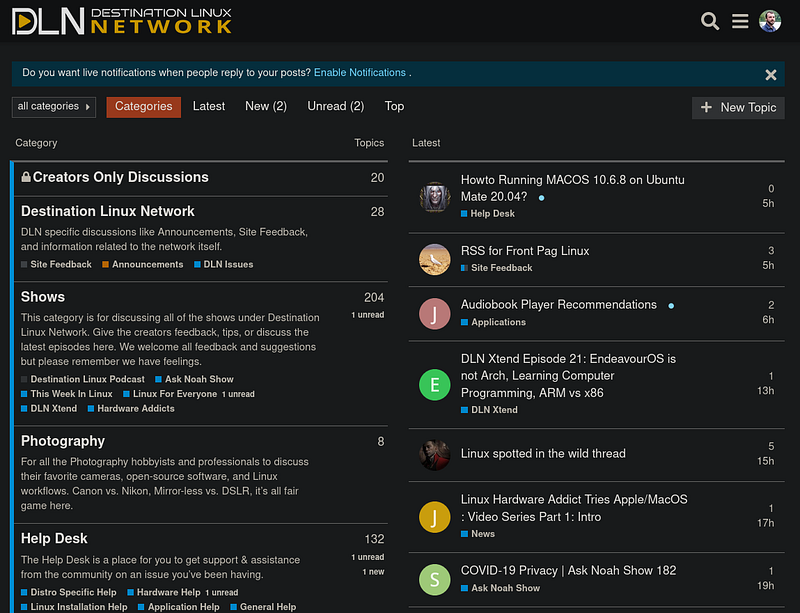
What do you like to use Linux for? (Gaming, Development, Casual Use, Tinkering/Testing, etc.)
“I do a little of everything. I write the shows Hardware Addicts and Destination Linux every week on Linux. Since I do the editing and producing of Hardware Addicts, it is all done on Linux through tools like OBS and Audacity. Video games, some programming, website development, server management — the works. It’s all Linux.
Admittedly, I had to change the type of games I played when I started with Linux four years ago, however, today with Steam Proton, that limitation is heavily lifted. It’s not perfect, but it’s darn near close.”
Do you have any preference towards desktop environments and distributions? Do you stick with one or try out multiple different kinds?
“I prefer rolling distros because they allow me to show Linux to the world on the latest and greatest hardware. Those aware of Linux are usually cognizant of the fact that Linux runs on on older equipment and that’s a huge advantage for the Linux ecosystem. However, that’s not it’s only role. Linux can also be amazing on the latest and greatest hardware. Rolling distros bring the latest kernel, Mesa drivers, and software packages so you can unleash the full capabilities of your machine and use the latest iterations of offerings from the software developers. Whereas non-rolling distros can be many months behind. This point is not just true for modern hardware — the work on the kernel often includes improvement to older hardware performance as well.
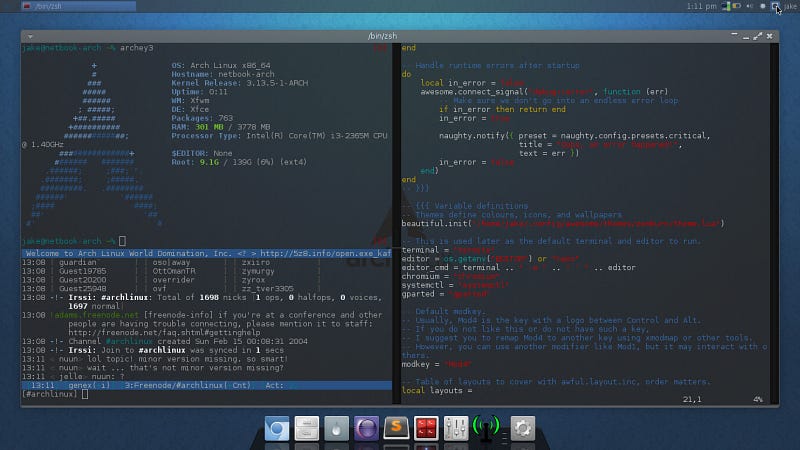
While I acknowledge that rolling is not for everyone, rolling distros tend to be largely misunderstood by some in the community. There are voices that say rolling equates to not being stable. That’s just not my experience at all. I really tried to break Arch and I just couldn’t. I spent one full year updating every time a new update was available and would even perform updates right before recording a new show — my system always worked.
Arch and Manjaro are my favorite distros right now. However, I also love distros like MX Linux AHS (Advanced Hardware Support) and Pop_OS! that are attempting to fill the gap between release cycle distros and rolling distro advantages.
As far as desktop environments go, I love them all. I’ve spent time with most of the mainstream DE’s and the reality is that they all have a place. Personally, my first love is Xfce. I think Sean Davis and the team working on Xfce are brilliant and Xfce’s perfection is in the simplicity. Next would be KDE [Plasma] for all of it’s modern and customizable awesomeness. For window tiling, it’s all about i3wm.”
What is your absolute favorite aspect about being part of the Linux and open source community?
“The learning opportunities are so vast. You can interact with people from all around the world that specialize in many aspects of development. To me, these individuals who develop distros, DE’s, and software are celebrities. The ability to interact with the developer directly to improve something is a very unique experience to Linux. As an example, right now I could reach out to Philip of Manjaro, drop an idea, and get a response…that’s craziness! Try doing that with an Apple of Microsoft developer. Good luck.”
What is one FOSS project that you would like to bring to the attention of the community?
“UBports Ubuntu Touch is at the top of my list. As someone who has worked in all aspects of telecom for 20+ years, the lack of a ‘true’ Linux mobile OS is disturbing and Ubuntu Touch is the best hope in my opinion.

When I say this, people often point out Android. Android might be a Linux base behind all the junkware layered on top, however, it does not represent any of the values of privacy and security that we hold dear in Linux.
I really hope UBports gets a massive infusion of contributions to help bring a true mobile Linux OS to the community.”
Do you think that the Linux ecosystem is too fragmented? Is fragmentation a good or bad thing in your view?
“There is no doubt that the Linux ecosystem is fragmented. That fragmentation is one of it’s greatest strengths and weaknesses. Do we really need ten audio editors and six video editors and twenty Ubuntu-based distros out there? Probably not. However, that’s also what makes Linux unique. If you don’t like something, fork it and make it your own.
There is no easy fix to the fragmentation. However, I think the barrier to contributing to many of these existing projects is often confusing and overly difficult. From personal experience, when getting involved in projects, I’m often lost of where to post things and how to know if I’m working on something relevant. If we can find ‘modern’ ways of opening these projects up to contributors, it will help invite that really talented coder to enhance your existing code versus just writing their own version of the program.”
What do you think the future of Linux holds?
“Short-term, I think Linux is going through an evolution. We’re seeing hardware vendors take Linux more seriously with increased Linux-based offerings from Dell and Lenovo, which is a welcome sight. On the software side, the evolution is finding out whether the community is interested in growth over principal. Well we sellout the foundation of open source in order to attain growth? I think we’re going through a change with the more direct involvement of big business and I’m not sure how that’s going to play out.
When I think about the movers and shakers for Linux on the desktop it’s companies like System76, Valve, Codeweavers, PINE64, Raspberry Pi Foundation, Manjaro, etc. I would watch them closely if you want to see where Linux desktop is going.
With regards to long-term, it’s hard to predict as technology shifts so rapidly. There is one thing I’m certain of — Microsoft is going to be a name we continue to hear a lot about in the Linux community. There is definitely a push from portions of the community to be more open to Microsoft and proprietary software. Besides projects like WSL creating a hybrid Windows/Linux workflow that presents some interesting changes in how we perceive competition. This will likely create some interesting debates in the Linux ecosystem as Microsoft integrates the best parts of Linux and uses that time to catch up on it’s own product offerings.
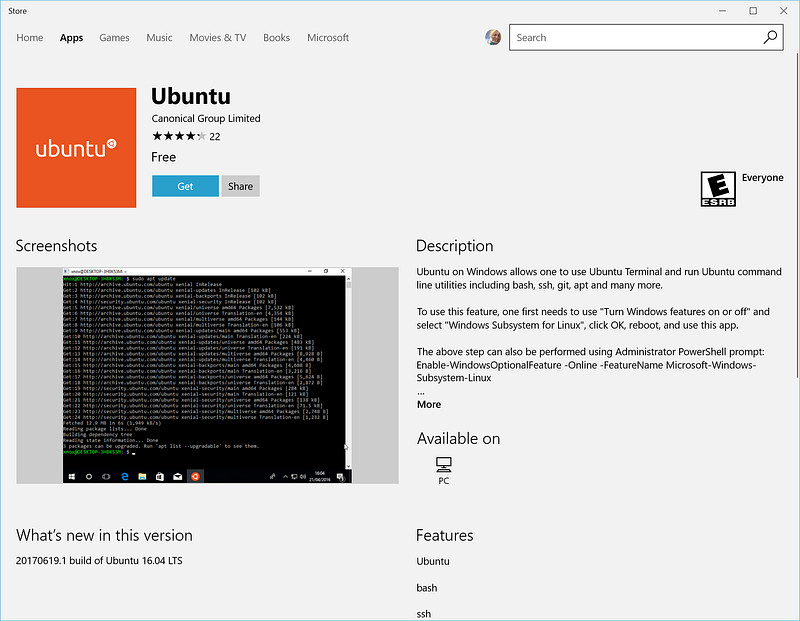
My dream is to see Linux continue to maintain its core values and adapt to the changes in technology as a leader. Integration of mobile and desktop along with up-to-date hardware support when the components are first released and not months later would be huge. Getting Linux included on hardware that we see in Best Buy’s and electronic stores would also be a welcome sight.”
How did your adventure into becoming a content creator for technology come about? What is it about Linux that excites you enough to dedicate your content to it when there are a plethora of other (and maybe more popular) technology topics you could be covering?
“My channel is about sharing my passion for all things geek. One thing about having kids is you quickly realize that adults forget how much fun learning can be. I want to bring that fun back. Linux fell into my lap due to my interest in privacy/security and it took off from there.
Those who look back at my older content will realize that my channel did not originate as a Linux channel, rather, it was just a way for me the document all the geeky things I was up to.
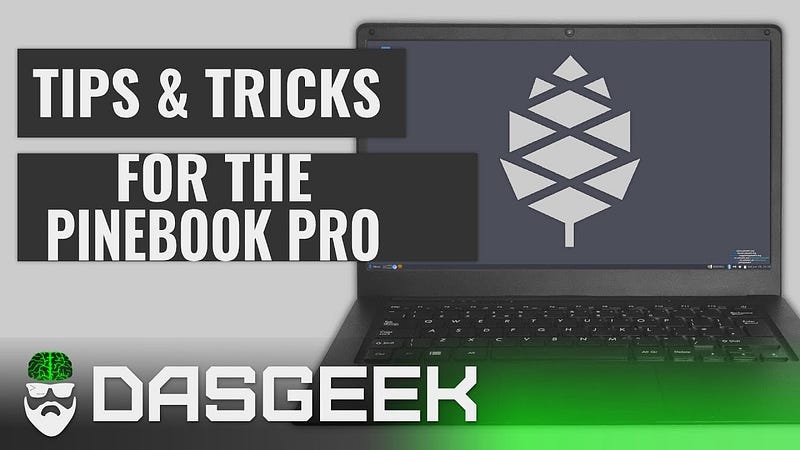
The advantage of doing a Linux-focused channel is that it offers an endless source of learning. This makes dedicating my channel to Linux a constant flow of ideas and new discoveries. This also means that when I show off a piece of software that’s open source, I know ‘everyone’ with access to a computer can learn it with me regardless of their financial situation. The downside to Linux-only content is that it’s still a small market and you’re not going to see millions of followers (not yet anyway). I’m okay with this because I don’t make my living from YouTube. In fact, I donate most of my proceeds to various open source projects.”
How has your flagship podcast, Destination Linux, changed over the years regarding content, voices, structure, etc?
“DL has undergone changes over the years, but something I’m proud of is the core foundation of the show has remained. DL is a family-friendly and open-minded show that promotes kindness and generosity, so I’m happy to say that essence of the show from when Rob and Rocco started has remained from then to now.
Over the past few years, the growth of the audience has been immense. I would say one of the biggest changes for me was in the realization that when we say something on the show, it has an immediate impact. When our audience was small, we could share certain random thoughts or rants and it would be relatively ignored. Today, if we say something negative or positive it will resonate throughout the community.

This shift has forced us to be more calculated in snap opinions. We’ve been re-calibrating our approach on the show to reflect this realization because it is important for us to not throw any unnecessary shade. We aren’t letting this affect the heart of the show, but we are keeping it in the forefront of our mind to make sure we can highlight things that deserve it rather than tearing things down…which is so common in the tech world.”
Where did the idea for a media group around Destination Linux come from? How did you get all of the diverse creators to join such a network? What has been the most exciting or fulfilling part about working on the network and the content it produces?
“Michael [Tunnel] had dreamed of starting a Linux and open source media network for years prior to joining DL as a host. Once he joined the show, his dream started to take shape as he saw the potential for what we could do together. It was pretty much a perfect partnership because we had already created our own projects, so the transition to doing stuff together just made sense.
We discussed working together on making the network happen — the pieces just started falling into place. We are so lucky to have so many awesome people in the DLN community that helped the DL podcast grow and all of our projects become a reality. We felt it would be perfect to incorporate the community into the creation of the network to provide a platform to all those awesome people.
The most fulfilling part of the network is watching great people have near instantaneous success when they launch their show on DLN. Shows will go from a few hundred to thousands of views overnight. Our flagship platforms that took years to build up are now launching pads for people who we shouldn’t have to wait years to discover.”
How important is the community to DLN? Do you do anything above and beyond to improve the online social experience for members, fans, and listeners?
“Without a community like ours, everything is for nothing. If our community wasn’t as supportive and giving, things like FPL (Front Page Linux), Discourse, and Telegram would be empty and boring. The community of fans of the shows keep us going. It’s not easy balancing work, family, and running a network along with doing shows. However, every time we get an email that tells us that we’re making a difference in someone’s life, it reinvigorates us. We have the greatest community in Linux, period. When we mess up, they forgive us. When we win, the celebrate with us.

As far as ways to improve the social experience, we do make a conscious effort to be involved in the discussions on the platforms we build. We’ve received many comments on how people are shocked we reply to them in Telegram and other platforms directly. The fact is that we created a community that we ourselves want to be a part of.
One way we’re looking to engage further is live discussions. We’ve hosted several Patreon live talks where we answer questions and hang out with fans from across the network of shows. We’re always looking for ways to give back as we did the FreeGeek and making sure we’re continuing to give as much as we’re getting.”
How does the content on Destination Linux Network set itself apart from all the other Linux content floating around out there? What is DLN’s identity within the greater Linux community, if you think it has one?
“DLN is fearless! Most of us make our livings outside of the network and that means we’re not focused on chasing the money. We only bring on advertisers that we ‘believe in’ and we’re not forced to cater or consider companies that we don’t. This also means we can ignore the toxicity thrown our way because we don’t have to attempt to appease those people just to get views. We don’t have to rely on click-bait or controversy to raise our status.
DLN sets itself apart because it’s rebellious and not afraid of change. We have a very strong foundation of principles, but outside of that we don’t make our creators stick to certain formulas. Everyone that joins DLN has freedom to be themselves creatively.
I think DLN is seen from the greater Linux community as a network that represents a diverse range of opinions and beliefs. For instance, DLN Xtend is a podcast where Eric [Adams] and Nate [Wolf] will openly disagree with other shows on the network or provide a differing point of view. It’[s not forbidden or looked down upon, but rather encouraged. The great thing about DLN’s range of shows is that you get something completely different from each one.”
Is there anything exciting planned for the future of the Destination Linux Network, without giving too much away?
“We have so many exciting things. We’re approached constantly with new shows and ideas from the community on ways to grow the network. I guess, I will give away a little something…
We have a new show and it’s going to fill a gap in our podcast line-up that I think many people are going to be very excited about. Was that detailed enough? Stay tuned.”
Do you have any major personal goals that you would love to achieve in the near future?
“Where do I start? With a tagline of ‘fill your brains’ on my show, I have endless personal goals. Here are a few:
- I want to be able to help promote the importance of privacy, security, and freedom of speech in a more impactful way. I wish to bring awareness to the constant threat we’re under of losing all three within the last standing truly ‘free’ place left in the world…the Internet.
- I would love to get more involved in the digital divide and helping to educate newcomers to Linux on the importance of open source. Versus just wagging the proprietary bone of ‘look we finally have Microsoft Office’…I would rather promote LibreOffice, Krita, OBS, Kdenlive, Audacity, and projects that everyone can learn regardless of their financial standing.
- I’m also working hard right now to learn Python and spread the passion and love of learning. Sharing my passion for learning new things is — at the end of the day — what I want DasGeek to be known for.”
I just want to wholeheartedly say thank you to Ryan for taking time out of his extremely busy schedule to prepare an interview with Linux++. Since joining DLN, I have come to know Ryan better and he is truly a passionate and exemplary member of the Linux community. His drive and passion for technology is palpable and he is extremely friendly, approachable, and helpful to everyone in the community. Thanks again for the awesome interview, Ryan!
If you would like to keep up with the latest news from Ryan and the Destination Linux Network team, you can follow along on Twitter, Discourse, Telegram, YouTube or check out the official website here.
Linux Desktop Setup of the Week
This week’s selection was presented by u/danvand in the post titled [MATE] Happy noob here! Arc Black Kiwi 3.36. Here is the screenshot that they posted:

And here are the system details:
OS: Ubuntu MATE 20.04
WM: Marco
Terminal: GNOME Terminal
Theme: Arc Black Kiwi
Icons: Arc Black Kiwi
File Manager: Caja
Wallpaper: Unknown
Thanks, u/danvand, for an awesome, unique, and well-themed MATE desktop!
If you would like to browse, discover, and comment on some interesting, unique, and just plain awesome Linux desktop customization, check out r/unixporn on Reddit!
See You Next Week!

I hope you enjoyed reading about the on-goings of the Linux community this week. Feel free to start up a lengthy discussion, give me some feedback on what you like about Linux++ and what doesn’t work so well, or just say hello in the comments below.
In addition, you can follow the Linux++ account on Twitter at @linux_plus_plus, join us on Telegram here, or send email to linuxplusplus@protonmail.com if you have any news or feedback that you would like to share with me.
Thanks so much for reading, have a wonderful week, and long live GNU/Linux!

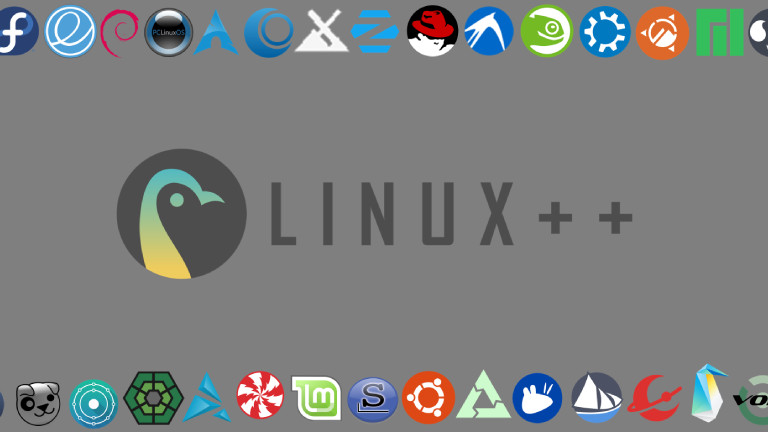
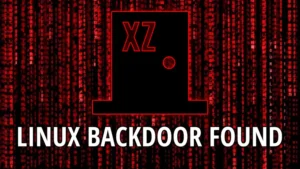
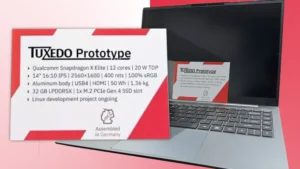


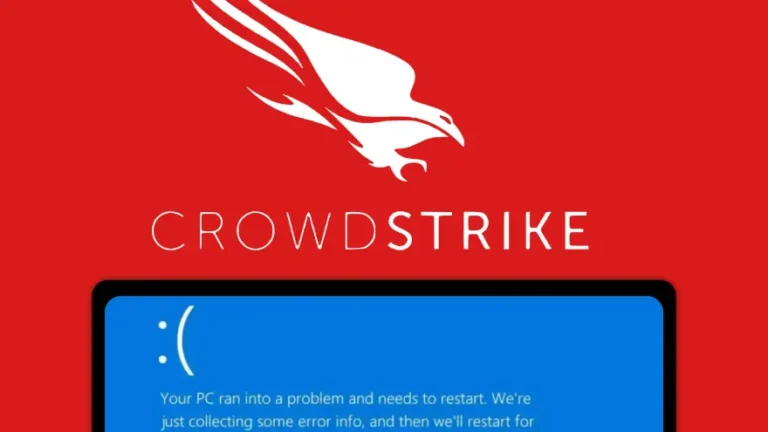
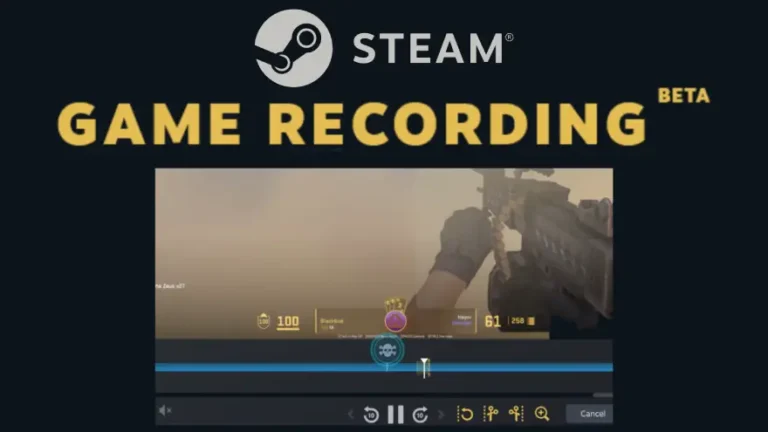
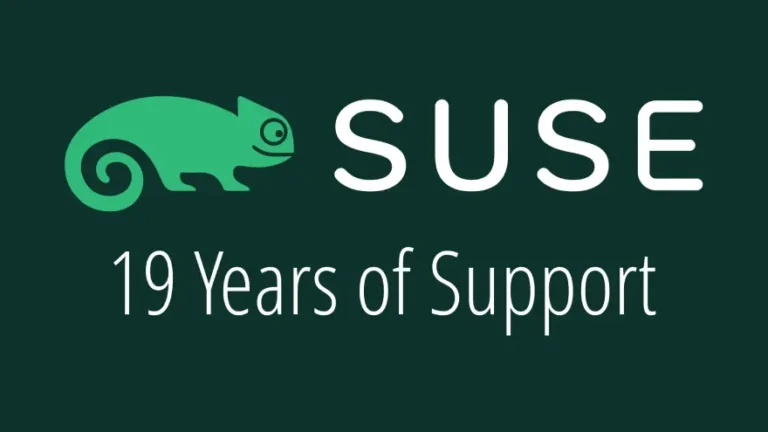
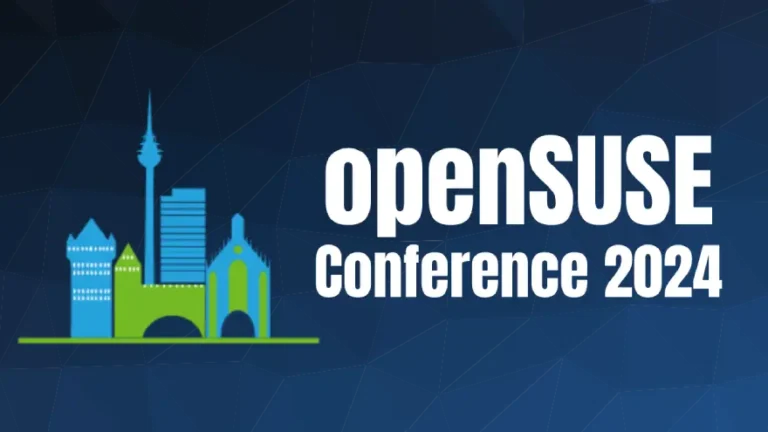
This was a great edition.
I enjoyed the interview with Ryan @dasgeek. I will quote a piece from it that I really liked:
That is exactly how I see it and I also try to promote open source alternatives at work, in my case in the education sector, even though it does not always work out.
Thank you Eric and thank you Ryan!
Join the discussion at forum.tuxdigital.com